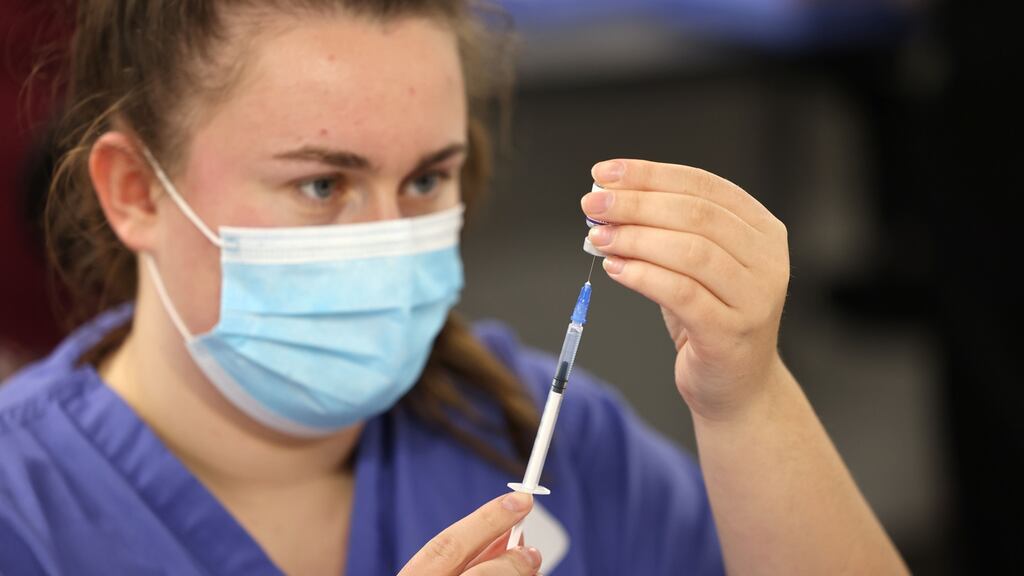At the end of another dire week in the world of Covid-19, as the air thickens with grim predictions, optimism is called for.
This wave of the virus, like the others, will pass. As a society we can profoundly influence the size and duration of the peak to come.
There is nothing exceptional about Ireland’s position. We might have started from a higher base in terms of case numbers, but other European countries are fast approaching our levels of infection.
Hospital Report
Our hospitalisation and death figures are mid-range relative to our neighbours. Indeed, the most relevant of the blizzard of graphs in the pandemic is the one that shows our current modest peak of Covid-19 deaths running at one-sixth of the peak of early 2020 and one-seventh of last January’s levels.
We have long known that while daily case counts grab our attention, they are not the best way of gauging the state of the pandemic. What matters more is the proportion of cases that result in serious illness, and this ratio has finally started to drop.
Last year, every 1,000 cases resulted in about 50 people needing to go to hospital. Primary vaccination saw this decrease to 30-35, according to the National Public Health Emergency Team (Nphet).
The ratio has now fallen further, to 15-20 admissions per 1,000 cases. Paradoxically, this is because the effectiveness of vaccines against infection is waning more than their effectiveness against serious illness. So more people are getting infected, but fewer of them need to go to hospital.
But a very large number of cases each day translates into significant numbers of hospitalisations, even with this smaller ratio.
Booster effect
One of the biggest things we can do to prevent new infections and serious illness is to vaccinate more people. But since 93 per cent of adults are already vaccinated, the next best thing is to counteract waning immunity by administering boosters.
We are already seeing the impact of the booster campaign among the oldest age group, the over-85s, and if Israel’s experience is anything to go by, the positive impact of boosters is likely to continue down through each lower age group as they receive their extra shots. Whether the protection offered by boosters will last is another question, but they will help us get through the winter.
They say comparisons are odious, but those who predict a re-run of Christmas 2020 next month are particularly so. A year ago there were no vaccines, and so no protection against the virus. Today, most of us have strong protection against an admittedly more transmissible virus. Yes, there may also be flu this time, but its transmission will be hindered by the same measures we are taking to control Covid-19.
The current crisis, therefore, is less about the numbers and more about the ability of the health service to cope – a health service that regularly runs at more than 100 per cent capacity, that does not run important services at weekends (even the Covid hospital numbers fluctuate thanks to the “weekend effect”) and that suffers chronic overcrowding in a handful of sites.
The Government is coming under strong criticism. The booster campaign has seemed to lack vitality, and the switch to widespread antigen testing is belated. The package of measures it announced this week was seen as too little by some, too much by others. Delays in testing are frustrating people and contributing to the spread of the disease.
More precautions
It remains the case that you cannot outsource common sense. The only rational reaction to an increase in threat level is to take more precautions. The problem is that many people, often understandably, do not consider themselves to be at risk, either due to their youth, good health or the fact of being vaccinated.
Any public health messaging has to take account of this, and it also has to reach the right audience.
An analysis by the Central Statistics Office on Friday demonstrates the folly of (some) youth. Almost 62 per cent of hospitalised Covid-19 patients who were under 25 were not vaccinated, while 48 per cent in the 25-44 age group were not vaccinated.
The CSO found 28 per cent of cases in ICU in September and October were people not born in Ireland – 90 per cent of people not born here who were in ICU reported being unvaccinated.
The other group filling up ICUs are vaccinated people with health problems – 97 per cent had an underlying health condition. Boosters should help here.
The trick will be to curb risky contacts that spread the disease while allowing normal life to continue to the greatest extent possible. That could yet lead to a Christmas that is “meaningful”.












